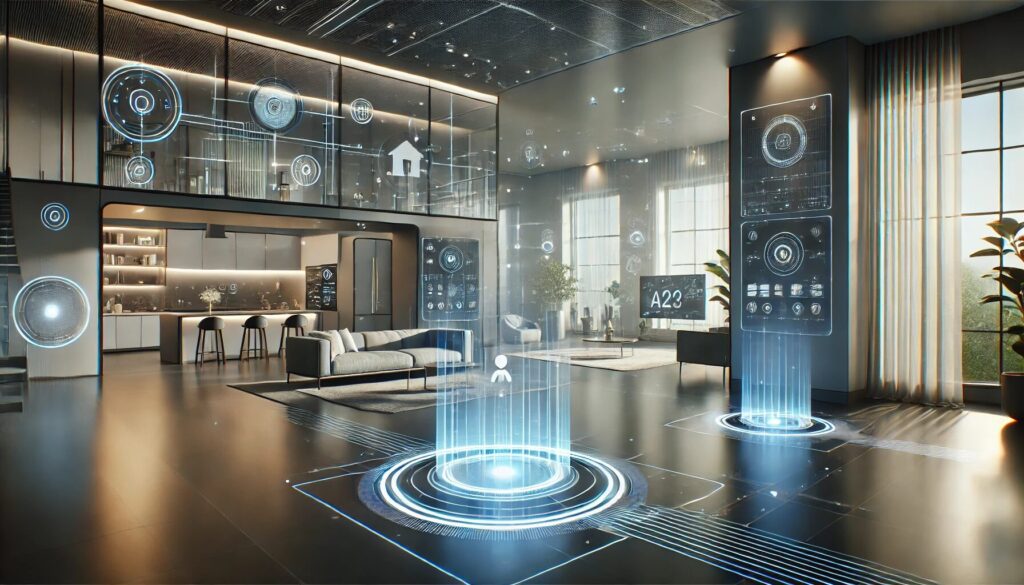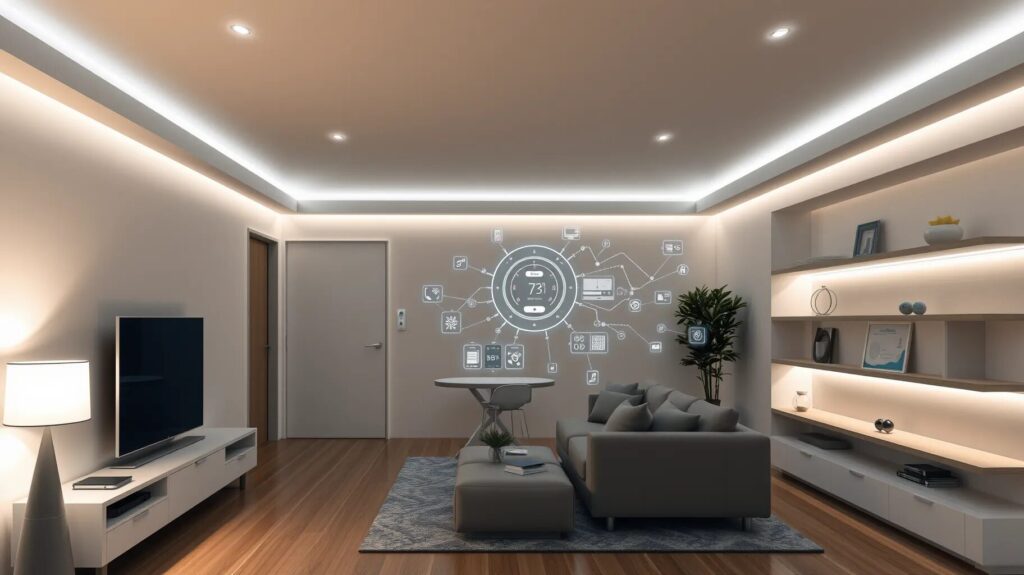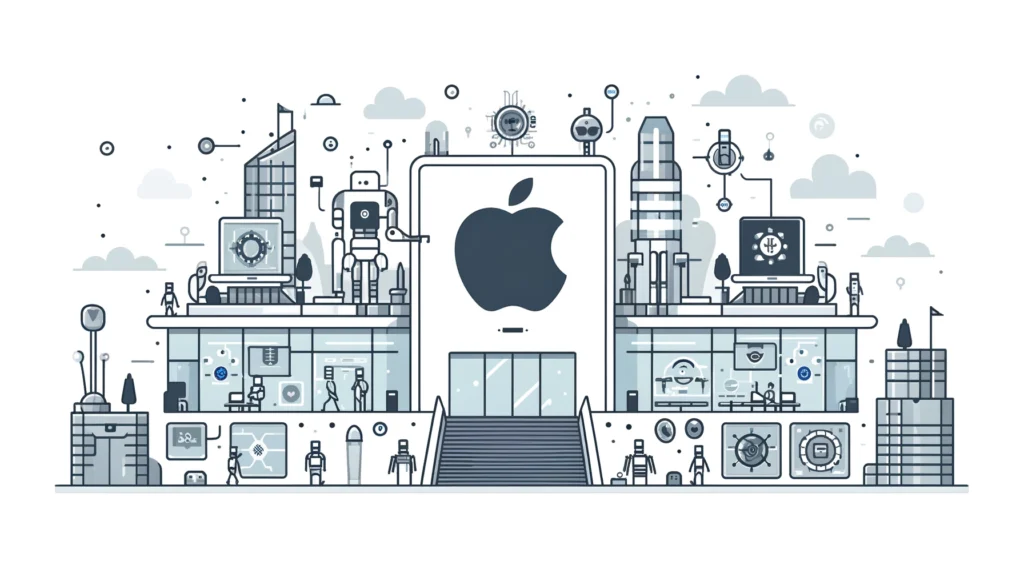
What is Ambient Intelligence? A Glimpse into the Future
Ever imagined walking into a room and the lights dim automatically, your favorite music starts playing, and the temperature adjusts to your ideal comfort level? This isn’t science fiction. Ambient intelligence (often called AmI) is turning these futuristic concepts into everyday reality. It refers to digital environments that are sensitive, adaptive, and responsive to human presence and actions. In other words, your surroundings become “smart,” reacting to your needs without you lifting a finger. Think of it as a friendly tech assistant, quietly working in the background, anticipating what you need next.
But how does this differ from typical smart technology? AmI goes beyond traditional automation by not just responding to commands but learning and predicting based on patterns. It integrates data from multiple sources and devices to create an environment that intuitively serves its users. The future? It’s already unfolding, and AmI is at the heart of it.
The Core Components Behind Ambient Intelligence
To fully understand ambient intelligence, it helps to break down the building blocks that make it work. The foundation of AmI relies on three main components:
- Sensing – Devices must be equipped with sensors that can detect environmental changes, such as movement, temperature, or lighting.
- Reasoning – Using AI and data analytics, the system processes information, learning patterns over time to make informed decisions.
- Acting – Finally, the system takes action, adjusting the environment based on the information it gathers.
This blend of sensing, learning, and acting enables devices to offer a personalized experience without explicit user input. These key elements come together in a seamless, nearly invisible way—one of the key appeals of AmI technology.
Why Ambient Intelligence is Taking Center Stage in Smart Tech
So, why is everyone talking about ambient intelligence? What makes it stand out in the sea of tech innovations? The answer lies in its capacity to create truly smart environments that are not just interconnected but intuitive. Unlike older systems where you had to give commands (think of smart speakers or thermostats), AmI operates silently in the background, anticipating your needs and adapting on the go.
For example, if your AmI-powered home notices you’re always turning up the heat in the evenings, it will eventually adjust the temperature automatically before you even think about it. That’s where the magic of AmI lies—it’s smart technology with a brain, moving away from simple automation to actual intelligence. This is why it’s being embraced in so many sectors, from homes and workplaces to hospitals and retail spaces.
Ambient Intelligence vs. Artificial Intelligence: What’s the Difference?
Ambient Intelligence might sound a lot like Artificial Intelligence (AI), but there’s a subtle yet important distinction between the two. While AI refers to machines or systems that simulate human intelligence and decision-making, AmI focuses more on the environment being aware and reactive to its users. AI is often an integral part of AmI, but they are not the same thing.
Think of AI as the engine that drives intelligent behavior in devices, while AmI is the holistic experience that makes your living space smart. AI might help your devices “learn” behaviors, but AmI orchestrates multiple devices and systems to create an environment that interacts with you effortlessly.
How AmI Is Transforming Smart Homes and Workplaces

When we think about how ambient intelligence is changing our daily lives, the most obvious examples can be found in smart homes and workplaces. Imagine waking up to the sound of your coffee machine starting to brew because your alarm just went off. Or walking into a meeting room that automatically pulls up the relevant files on your screen based on your calendar. This isn’t just convenience—it’s efficiency, tailored to your routine and habits.
In smart homes, AmI means energy efficiency, personalized comfort, and seamless control of everything from lighting to entertainment. In the workplace, it could lead to more productive environments, where meeting spaces, office temperatures, and even digital tools adjust to support your team’s productivity. The future of both home and work life is moving toward a reality where technology understands your needs and enhances every experience.
The Role of IoT in Boosting Ambient Intelligence
The Internet of Things (IoT) is the backbone of Ambient Intelligence. Without IoT, AmI wouldn’t be able to function. IoT refers to the network of interconnected devices—your phone, smartwatch, smart speakers, sensors—that communicate with one another. Together, they create a web of information, feeding into an ambient intelligence system that can analyze patterns and act accordingly.
For instance, your smartwatch could detect that you’ve had a stressful day, and your home’s AmI system could automatically adjust the lighting and play calming music by the time you get home. This kind of interaction between devices is possible only because IoT links them together, allowing for real-time data exchange that enhances personalization.
Personalization: How AmI Enhances Daily Experiences
One of the most impressive aspects of ambient intelligence is how it personalizes your environment in ways that feel natural, almost like magic. It’s not just about convenience—it’s about creating an experience that fits you uniquely. Imagine entering a room, and without needing to touch a single switch, everything adjusts to your preferences: the lighting softens to match your mood, your favorite playlist begins, and the temperature shifts to your ideal comfort level. It’s like the space knows you intimately.
That’s the power of personalization in AmI. Over time, the system learns from your behaviors, habits, and even physiological responses (through devices like fitness trackers or smartwatches). Whether it’s adjusting your workspace lighting to prevent eye strain or ensuring the perfect ambiance for your morning coffee, ambient intelligence seamlessly integrates into your daily routine. It’s all about enhancing comfort and minimizing friction in ways that become intuitive and expected.
Ambient Intelligence in Healthcare: A Life-Changing Impact
In the world of healthcare, ambient intelligence is proving to be a real game-changer. Imagine a hospital where the lighting, temperature, and even the air quality adjust based on the health condition of the patient, helping speed up recovery. Ambient intelligence in healthcare can monitor patient vitals, predict emergencies, and alert caregivers in real-time without anyone needing to press a button. This proactive approach helps medical staff focus on more critical tasks while ensuring that patients get the personalized care they need.
Beyond hospitals, AmI is also revolutionizing elderly care. By tracking the movement and behaviors of seniors in their homes, ambient intelligence can detect falls, irregular movements, or unusual behavior, alerting caregivers instantly. This kind of early intervention can be life-saving, especially for those who want to maintain independence while ensuring they’re still safe.
The Challenges: Is Ambient Intelligence Too Invasive?
As wonderful as ambient intelligence can be, it raises an important question: How much is too much? With its ability to collect vast amounts of personal data to function properly, some worry that AmI might cross the line from helpful to invasive. When every action, from how long you stand still to how you breathe, is monitored, it begs the question of privacy and autonomy. Will people still feel comfortable in their own spaces knowing they’re constantly being “watched,” even if it’s by non-human systems?
Privacy concerns are valid, and it’s crucial that users are informed and in control of how their data is used. Companies developing AmI systems must ensure there are clear boundaries and safeguards to protect individuals’ personal information. While the goal is to make life easier, it shouldn’t come at the cost of freedom and security.
Privacy Concerns: Striking a Balance with Smart Tech
When it comes to ambient intelligence, the key challenge is balancing convenience with privacy. Smart environments, by their nature, collect and analyze data to function effectively. But what happens to that data? Who owns it, and how is it being used? These are the kinds of questions that users need answers to before they feel comfortable integrating AmI into their lives fully.
There’s also the risk of this technology being hacked, with sensitive personal data falling into the wrong hands. To address these concerns, developers must prioritize security and give users clear, easy ways to control what information is being collected. For instance, users could be given on-demand transparency, where they can see what data is being used in real-time and decide what they’re comfortable sharing. This balance between smart tech convenience and data security is where the future of ambient intelligence must head.
Ambient Intelligence in Retail: Revolutionizing Shopping Experiences
Ambient intelligence is also shaking up the retail industry, offering a more personalized and interactive shopping experience. Imagine walking into a store, and your phone immediately syncs with the shop’s system, pulling up tailored product recommendations based on your past purchases or current location in the store. The changing rooms could automatically adjust lighting based on what you’re trying on, or the system could suggest complementary items in real-time.
In online shopping, AmI can anticipate your preferences even before you make them known. For example, an ambient system could track your recent search history and suggest products just as you’re about to open your favorite shopping app, or even sync with your calendar to remind you of birthdays and special events. Retailers are eager to adopt ambient intelligence because it allows them to offer an ultra-personalized service that keeps customers coming back for more.
Sustainability Meets Technology: AmI’s Role in Green Innovations
As we face increasing environmental challenges, ambient intelligence is stepping up to promote sustainability. One of the key ways it does this is by helping to optimize energy usage. For instance, smart buildings equipped with AmI can adjust lighting, heating, and cooling based on the number of people in a room or the time of day, significantly reducing unnecessary energy consumption.
Imagine an AmI-powered home that detects when you leave a room and automatically turns off lights and appliances, or public spaces that dim their lights when foot traffic is low. This is where the intersection of technology and sustainability truly shines. By using resources more efficiently, AmI isn’t just making our lives easier—it’s making the world greener. And as we move toward a more environmentally-conscious future, AmI could play a pivotal role in how cities and homes reduce their carbon footprints.
How Ambient Intelligence is Paving the Way for Smart Cities
Speaking of cities, ambient intelligence is the cornerstone of the smart city revolution. Picture a city where traffic lights adjust in real-time based on congestion patterns, public transportation schedules are fine-tuned based on rider demand, and waste management systems only operate when bins are full. These are just a few examples of how AmI can transform urban areas into highly efficient, responsive environments.
Smart cities powered by ambient intelligence are not only more sustainable but also safer and more livable. Sensors placed around the city can monitor air quality, adjust public lighting based on pedestrian traffic, and even alert emergency services to accidents or incidents as they happen. The future of urban living looks brighter—and smarter—thanks to ambient intelligence.
Real-World Examples of Ambient Intelligence in Action
You don’t have to imagine too far into the future to see ambient intelligence in action—it’s already here. Take Google’s Nest thermostat, for example. It learns from your habits and adjusts the temperature in your home without you needing to do anything. Or Amazon’s Alexa, which connects with various IoT devices to control lighting, appliances, and more.
In workplaces, AmI is being used to create environments that boost productivity. Office buildings equipped with sensors can adjust everything from ventilation to lighting to enhance focus and comfort based on the number of people in the room. Some hospitals are using ambient intelligence to track patient movements and monitor vital signs, reducing the need for constant manual check-ins by nurses and allowing for more proactive care.
The Future of Ambient Intelligence: What Can We Expect?
As ambient intelligence continues to evolve, the possibilities seem endless. Experts predict that we’ll see even deeper integration of AmI into our daily lives in the near future. Imagine cities where every element—from transportation to public safety—is powered by ambient systems. Your car could communicate with traffic signals, adjusting your route to avoid congestion, while your home could send reminders to restock groceries based on what’s missing from the fridge.
AmI’s future potential lies in its ability to transform entire environments seamlessly. We’re looking at systems that will not only respond to individual actions but predict needs across communities and workplaces. Everything, from healthcare to entertainment, will be enhanced by the subtle, intelligent presence of ambient systems. As machine learning and AI technologies improve, ambient intelligence will only get smarter, better at predicting human behaviors, and more deeply integrated into both our personal and public spaces.
Should You Be Excited or Worried About Ambient Intelligence?
It’s natural to feel a mix of excitement and concern when it comes to ambient intelligence. On one hand, the potential for improved quality of life, personalized experiences, and a more connected, efficient world is undeniably appealing. Who wouldn’t want a home that adapts to their needs or a city that functions like a well-oiled machine? AmI offers convenience, efficiency, and an incredible level of customization that can improve how we live, work, and play.
However, with the promise of intelligent environments comes the potential for overreach. Privacy concerns are valid—having a system that knows so much about you, from daily habits to health metrics, can be a double-edged sword. As with any advanced technology, the key will be finding the right balance between innovation and ethical responsibility. The future of AmI depends not just on its technical advancements but on how well we can address concerns over data security, privacy, and autonomy.
How to Prepare for an Ambient Intelligence-Powered World
As ambient intelligence grows more prevalent, it’s essential to start thinking about how we can prepare for a world where this technology is part of daily life. One of the best ways to prepare is by staying informed. Understanding how AmI works and how it uses data is crucial in making informed decisions about what technologies you allow into your life.
Additionally, it’s important to maintain a healthy skepticism. Ask questions about how your data is being used, what safeguards are in place, and how you can control or limit data collection when necessary. Being proactive about your digital privacy will help ensure you reap the benefits of ambient intelligence without compromising your security.
Moreover, as this technology rolls out in various sectors, it might be wise to consider upgrading the IoT devices in your home or workplace to ensure they can integrate with future AmI systems. Understanding and using smart technology is a good first step toward adapting to a more connected, intelligent environment.
So, the future with ambient intelligence is unfolding right in front of us. Whether we embrace it fully or cautiously, it’s clear that this innovation will shape how we interact with our surroundings, making life more seamless, intuitive, and personalized than ever before.
Resources
- IEEE Xplore – Ambient Intelligence Research
IEEE Xplore provides access to scholarly papers and research on the latest advancements in ambient intelligence technology, including applications in smart homes, healthcare, and IoT integration. - The Ambient Intelligence Handbook
This comprehensive guide covers the fundamental principles, applications, and challenges of AmI. It’s a great resource for anyone looking to understand the technical and societal implications of this technology. - MIT Media Lab – Ambient Intelligence Group
The Ambient Intelligence Group at MIT focuses on developing systems that seamlessly integrate with users’ environments. They publish innovative research on AmI applications across various fields. - Gartner – Emerging Technology Insights
Gartner offers insights into emerging technologies like ambient intelligence. They provide market analysis, case studies, and forecasts on the impact of AmI in different sectors. - European Commission – Ambient Intelligence Vision
The European Commission has been at the forefront of promoting AmI. Their resources explore the societal and economic impact of this technology in Europe and beyond, including its role in smart city initiatives. - IoT Analytics
IoT Analytics offers reports and articles on the intersection of IoT and ambient intelligence. They delve into real-world applications, market trends, and how IoT fuels the growth of smart environments.





